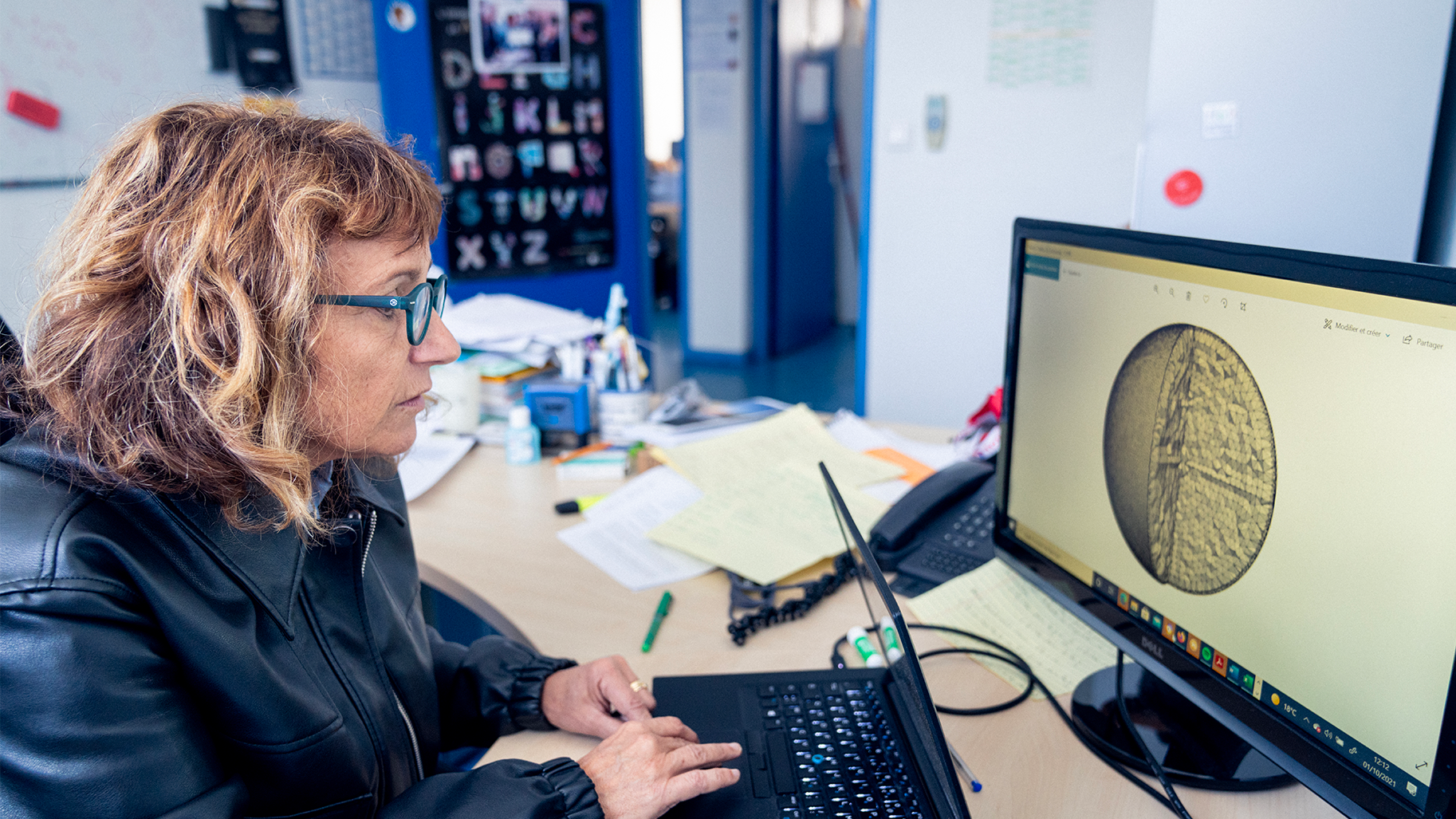Listen to the Sun to explore its structure
Date:
Changed on 09/04/2024

Sit down in your kitchen, close your eyes and ask someone close to you to tap various objects. You'll easily recognize the crystal of a champagne glass, the plastic of a chair or the metal of a saucepan. Because the sounds they produce are different: as they propagate through the objects, they interact in specific ways with their material.
The Makutu project-team at the Inria Centre at the University of Bordeaux is using the same principle to study a completely different subject: the Sun, its structure and internal dynamics. On its surface, a plasma of hydrogen and helium at 5,800°C is constantly undergoing violent vertical movements, rather like boiling water. This phenomenon, known as "turbulent convection", generates acoustic waves from which information can be extracted: this is the basis of helioseismology, a science born in 1960 with the first work of American researcher Robert Leighton.
"The Sun sings, and even if we can't hear it from Earth, we can observe the propagation of these waves from a satellite," says Hélène Barucq, head of the Makutu project team, with a touch of poetry.
Makutu is not starting from scratch: for years, following the same principle, it has been developing mathematical and numerical tools to help geophysicists image the depths of our planet. But tackling the Sun is another challenge.
It's a star 340 times bigger than the Earth, fluid rather than solid: its core, where the temperature reaches 150 million degrees, rotates on itself almost four times faster than its intermediate and outer layers. Another peculiarity is that the Sun has no "surface" as such: this is made up of the turbulent plasma mentioned above. And, of course, it's impossible to place any kind of sensor on it.
Astrophysicists have their work cut out for them when it comes to understanding what lies behind the sun's dazzling light. How is it structured? What physical laws govern its internal dynamics? The task is immense, and for the moment only simplified numerical models are being used," explains Florian Faucher, a researcher on the Makutu project-team. For example, the Sun is often represented as a fluid whose physical properties at each point vary only according to its distance from the center of the star.
To advance this knowledge and refine these models, Makutu has been collaborating since 2013 with a team of astrophysicists from the Max Planck Institute for Solar System Research (MPS). " They bring their expertise in physics and seismology. We provide the tools for simulating wave propagation, and solving nonlinear inverse problems ," summarizes Ha Pham, a researcher at Makutu in charge of the team associated with the MPS.
Collective work is organized around monthly videoconferences and daily exchanges. Both teams are highly responsive. They come from distinct scientific communities, and each brings its own skills to the table. Helioseismology is a fascinating field: we still know very little about it, and there are always doubts," emphasizes Hélène Barucq. Fortunately, our astrophysicist colleagues give meaning to what we observe.
As you can see, the approach adopted by Inria is to return from the acoustic waves to the depths of the Sun where they propagated. It's a very tricky exercise, since the researchers are not dealing with waves, but with phenomena of superimposed waves, produced continuously and randomly by turbulent convection.
They have taken up the challenge using "wave correlation" : they record and correlate signals measured at two points on the Sun, and are thus able to calculate a source wave, extracting data on its path, the alterations it has undergone and the type of medium it has passed through.
By examining a set of point duos, we have a wealth of data from which to extract information on the Sun's internal 3D structure," adds Florian Faucher. This is a very long-term perspective, which is still hampered by the limits of supercomputers: we'd need to solve equations with several hundred million unknowns ".
Researchers are also faced with other questions. There are a large number of possible pairs of points, depending on their location on the Sun and their distance from it, and each pair provides different and complementary information. So, what are the criteria for choosing these points? How many do you need to collect relevant data without being swamped by the sheer volume of calculations? What mathematical and numerical methods can be used to simplify these calculations?
Makutu has achieved a number of important results in recent years. The first concerns the efficient modeling of Green's core, an essential ingredient for imaging in helioseismology. Secondly, the team has built a mathematical model of the waves propagating in the solar atmosphere, the solution to which can be produced using a supercomputer.
Inria researchers have also developed a numerical tool to model solar waves while integrating the effects of gravity. This has revealed wave modes previously invisible in simulations. " The challenge now is to enrich this model to bring it closer to reality, by taking physical phenomena ever more fully into account in our numerical simulations ," comments Florian Faucher.
At the same time, the team is designing algorithms and numerical methods to speed up and simplify calculations. This is a major challenge," insists Hélène Barucq, " and we still need to scale up. In the future, we'll need to combine our methods with artificial intelligence. " Finally, Makutu is starting two helioseismology-related research projects in 2024: the Franco-German ANR/DFG Butterfly project, led by Makutu and the MPS, and the ERC starting grant Incorwave led by Florian Faucher. The Sun is far from having revealed all its mysteries; but on Earth, we're working hard to unravel them.